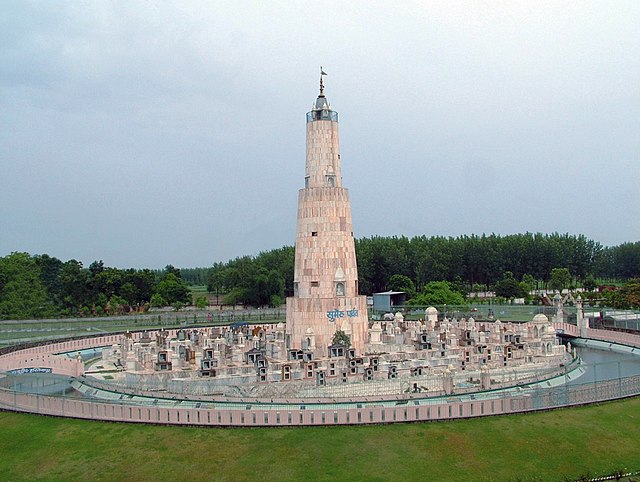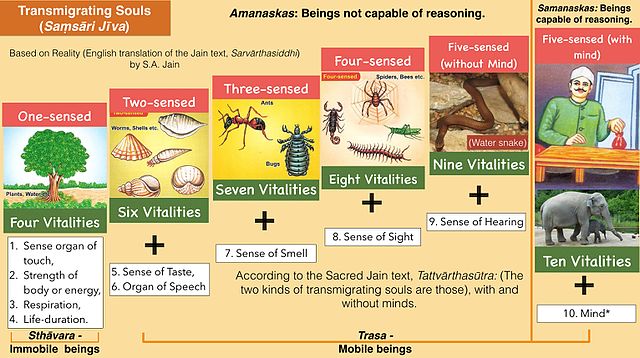Jain cosmology is the description of the shape and functioning of the Universe (loka) and its constituents according to Jainism. Jain cosmology considers the universe as an uncreated entity that has existed since infinity with neither beginning nor end. Jain texts describe the shape of the universe as similar to a man standing with legs apart and arms resting on his waist. This Universe, according to Jainism, is broad at the top, narrow at the middle and once again becomes broad at the bottom.
Chart showing the classification of dravya and astikaya
Structure of Universe according to the Jain scriptures.
'Trilok Teerth Dham' modelled after the three lokas
Depiction of Mount Meru at Jambudweep, Hastinapur
Jainism, also known as Jain Dharma, is an Indian religion. Jainism traces its spiritual ideas and history through the succession of twenty-four tirthankaras, with the first in the current time cycle being Rishabhadeva, whom the tradition holds to have lived millions of years ago, the twenty-third tirthankara Parshvanatha, whom historians date to the 9th century BCE, and the twenty-fourth tirthankara Mahavira, around 600 BCE. Jainism is considered an eternal dharma with the tirthankaras guiding every time cycle of the cosmology. The three main pillars of Jainism are ahiṃsā (non-violence), anekāntavāda (non-absolutism), and aparigraha (asceticism).
The 58.8ft high monolithic statue of Bahubali built in 981 CE
Classification of Saṃsāri Jīvas (transmigrating souls) in Jainism
Rebirth loka (realms of existence) in Jain cosmology.
Division of time in Jain cosmology.







